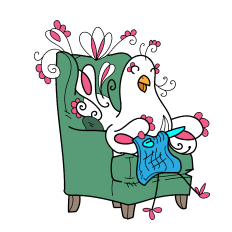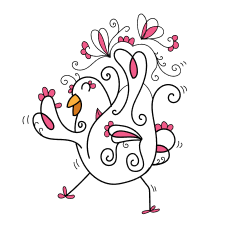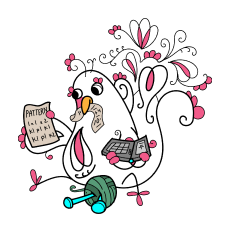How to Tink Your Knitting: Easy Video Tutorial to Un-Knit Back to Fix Mistakes Without Taking The Work Off Of Your Needles
Sometimes, you make a mistake in your knitting. You have some different options for how you deal with that. In both crochet and knitting, you can “frog” the work. However, you have an even better options sometimes with knitting. You can “tink” it. In other words, you can “un-knit” your work back to the point of the mistake and then begin again. Do you want to learn how to tink your knitting?
Want to learn how to knit from the ground up? Check out our Beginner Knitting lessons for Crocheters. They work for newbies to yarn as well.
Frogging vs. Tinking in Knitting
If you’re either a knitter or a crocheter, then you’ve likely heard the term “frogging.” It means that you “rip back” your work. In other words, you unravel your work. You might frog an entire work in progress because you decide that you don’t want to make it anymore.
Alternatively, you might see a mistake many rows back and frog back to that point. (Tip: put a stitch marker into the work where you want to stop frogging it so that you don’t go too far!)
Why is it called frogging? Because you “rip it, rip it, rip it” back. Which sounds like ribbit. A fun little fact.
Understanding When to Tink in Knitting
You can frog knitting. However, sometimes you don’t want to rip back all of that work. Instead, you just want to go back to the point where you’ve made a mistake. In crochet, that’s easy to do with frogging. After all, each loop is separate from the others in its row. However, in knitting, the loops in a row are all connected. Trying to rip back can cause some of them to drop off of the needle and make even more of a mistake.
Therefore, you might just want to tink. If you look at the word closely, you’ll see that it reads “knit” backwards. And that’s exactly what tinking is. You’ll knit backwards to the point where the mistake is. Or, more accurately, you will un-knit to that point.
So you can use frogging in both knitting and crochet to get back to a certain spot in the work. But if you want to carefully undo just a few stitches backwards, then you want to learn how to tink in knitting. Basically, if you want to undo some stitches, or even some rows, without removing your knitting needles from your work in progress, then your solution is tinking.
How to Tink in Knitting
Now you understand when you would use tinking, right? But how exactly do you do it? Well, let me show you:
You might be surprised to learn just how easy tinking is. This video is just about five minutes long. Yet, it shows you what you need to know in order to learn this technique. It’s such a helpful way to deal with knitting mistakes.
Basics of Tinking: The Daughter and Mother Stitch
The first thing that you’ll see in this video is that you can stretch out your stitches just a little bit by pulling them down slightly. This allows you to see the separate stitches very easily. You’ll see the first stitch that’s on your needle. We call that the daughter.
Directly underneath it is the mother. When you tink, you insert your needle into the mother stitch. Why? Because we want to get the daughter off of the needle; that’s the one we are un-knitting. To do that, we need to go through the mother.
So, insert the left-hand needle into the mother stitch. Then let the daughter stitch just fall off the right hand needle. Now the mother stitch is back on the left hand needle where she belongs as we un-knit the work.
How To Tink Your Knitting and Your Purls
As you’ll also see in the video, you can tink knits and you can tink purls. And you know what? There’s no difference at all! So whether you’re working with knits or purls, which are our two basic foundation stitches in knitting, you do the exact same thing. So easy right?!
More Tips From This Video
I’ve tried to make this as super simple for you as possible. Therefore, I’ve incorporated some additional tips into this video about how to tink your knitting. You’ll see:
- How to continue adjusting your tension and stretch to accommodate for the changes as you tink your work. This really helps you see where to insert the needle as you un-knit.
- What happens if you accidentally skip the “mother” stitch and insert the needle below into the “grandmother” stitch. It’s a common mistake; don’t worry, I show you how to fix that, too.
- Some stitches tink a bit differently than the knit and purl stitches. For example, the ssk sits a little differently on your needle. So I explain that as well.
You Might Also Like:
Subscribe to the Marly Bird YouTube Channel for lots more tips and tricks.










